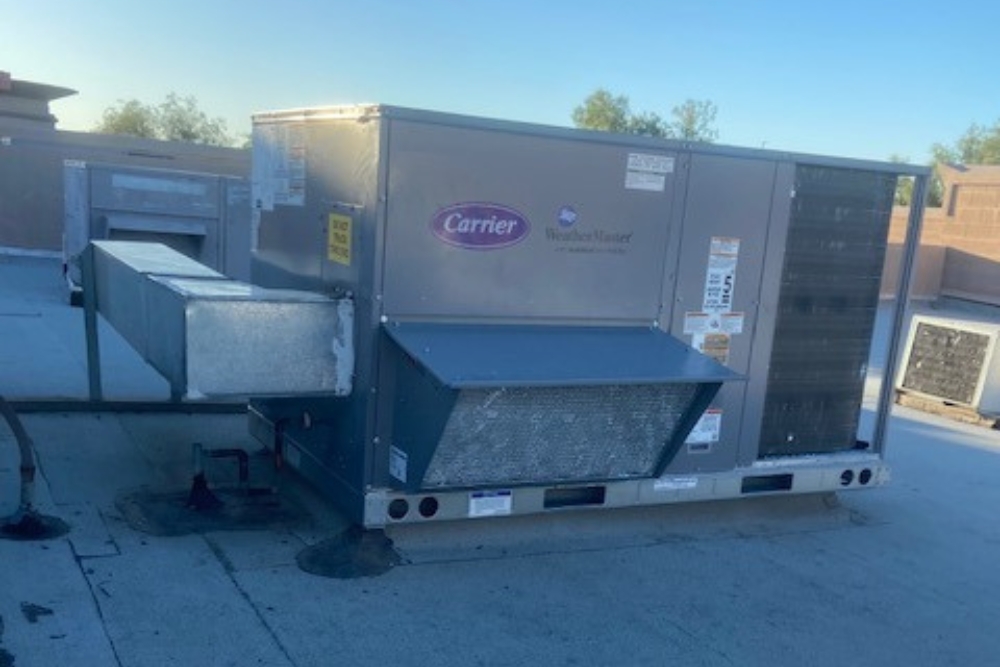Amid rising electricity costs and a volatile macroeconomic environment, facilities managers and commercial building owners across the United States are seeking reliable, energy-efficient solutions that consistently support both employees and customers.

One increasingly popular strategy is the installation of high-efficiency heat pump rooftop units (RTUs) to reduce energy consumption and improve overall building performance.
Heat pump RTUs may not be flashy, but they are among the most impactful upgrades a business can make. Traditional RTUs, the large metal boxes often seen on commercial rooftops, handle both heating and cooling. The problem is that many of these units are outdated and inefficient, powered by fossil fuels and prone to frequent breakdowns. Some are 10 to 20 years old and operate at a fraction of the efficiency of modern systems. They waste energy, increase operational costs, and deliver inconsistent performance.
Modern heat pump RTUs offer a different approach. Instead of burning fuel to generate heat, they use electricity to move heat in or out of a building, depending on the season. In the summer, they extract heat from inside the space and release it outdoors, functioning as a traditional air conditioner. In the winter, the process reverses, and the unit draws heat from the outside air, even in cold conditions, and brings it indoors. Thanks to significant technological advancements, today’s heat pumps perform efficiently even in sub-freezing temperatures. The result is a system that heats and cools with less energy, fewer emissions, and greater reliability.
Proven Results
Budderfly has installed these systems at about 300 sites, including restaurants and retail stores, and is proving how effective and versatile they have become. Some buildings already had heat pump units in place, but they were aging and inefficient. We replaced those with modern, high-SEER (Seasonal Energy Efficiency Ratio) models. Other locations transitioned entirely from gas-based systems to fully electric heat pump solutions. In both scenarios, energy performance improved significantly.
The performance of these units across diverse climates highlights the technology’s versatility. From the humid heat of Florida and Texas to the frigid winters of Minnesota and Maine, these heat pump RTUs are running efficiently. One of the most common misconceptions about heat pumps is that they struggle in wintry weather. While that may have been true in the past, today’s models are built to withstand extreme temperatures and still operate effectively. Budderfly’s rollout across 37 states offers real-world evidence that modern heat pumps are a reliable solution anywhere.
Broader Impact
In addition to energy savings, businesses experience improved indoor comfort, quieter operation, and better air quality. These new systems maintain more consistent temperatures, regulate humidity more effectively, and offer superior airflow. Just as importantly, this upgrade strategy supports long-term sustainability. Because heat pumps rely on electricity rather than fossil fuels, they produce significantly fewer greenhouse gas emissions. As the national energy grid becomes increasingly powered by renewables like solar and wind, heat pump systems become even cleaner over time.
Energy efficiency can be practical, scalable, and financially viable without disruption or compromise—and heat pumps can help. For businesses still running on outdated rooftop units, the opportunity to upgrade has never been more compelling. It is a glimpse into how commercial buildings across the country can modernize quickly and cost-effectively when the right support is in place. Facilities managers looking to reduce energy costs, improve HVAC performance, and future-proof their buildings should consider rooftop RTU upgrades as a straightforward, high-impact solution.
Vishal Patwari is the manager of energy engineering at Budderfly, an Energy-as-a-Service (EaaS) company.
